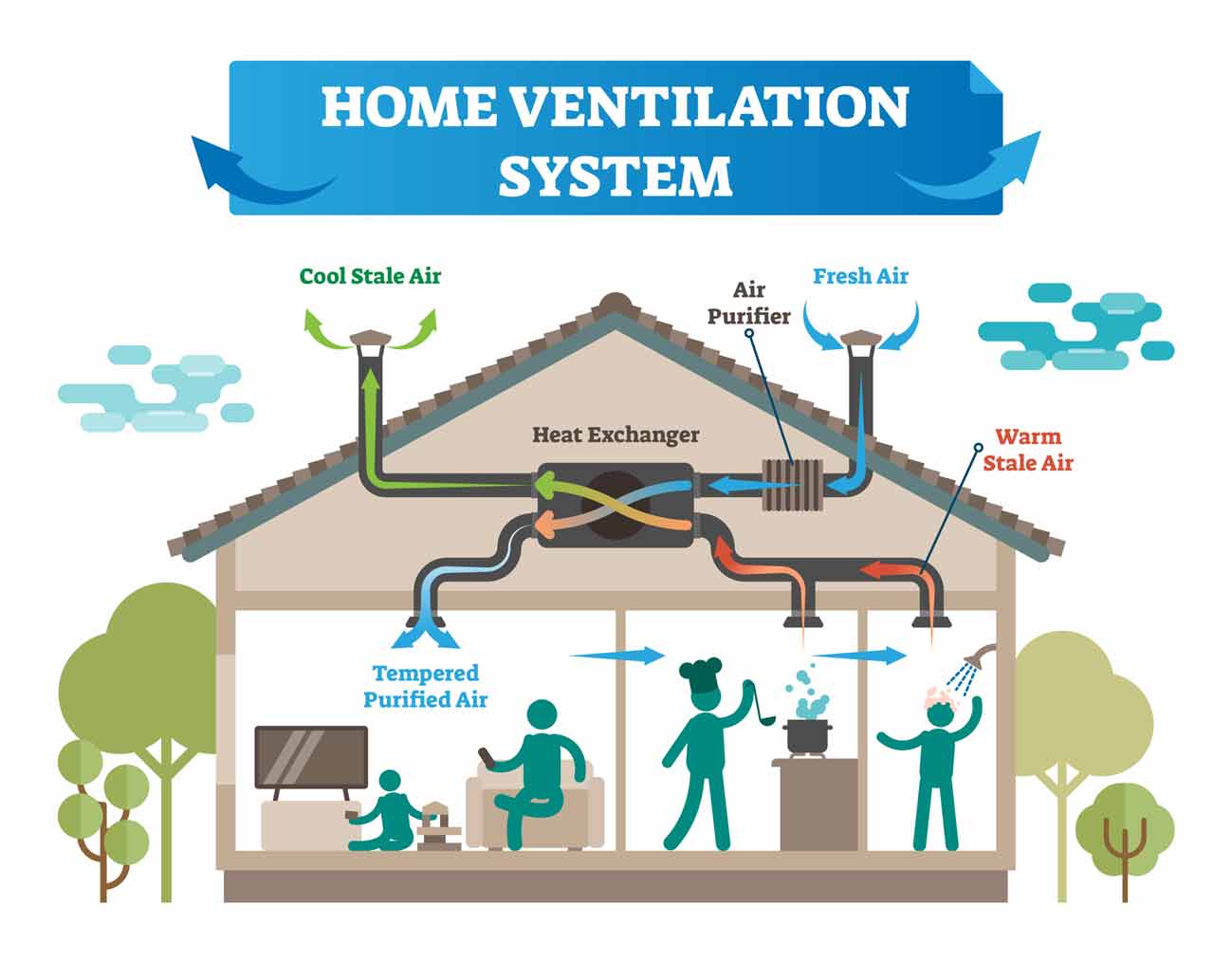Financial Benefits of HRV for Homeowners
Checking out the Perks of Heat Recovery Ventilation for Power Efficiency in Homes
Heat Recovery Ventilation (HRV) systems provide homeowners a practical method to enhancing power efficiency. By redeeming warm from outgoing air, these systems can significantly lower heating & cooling expenses. Additionally, they provide a constant supply of fresh air, enhancing interior air quality and convenience degrees. As homeowners take into consideration lasting choices, comprehending the subtleties of HRV systems ends up being significantly essential. What elements should one evaluate before making such a financial investment?
Recognizing Heat Recovery Ventilation Solutions

Just How HRV Boosts Indoor Air High Quality

Energy Cost Savings: The Financial Advantages of HRV
Making the most of energy performance, heat recovery ventilation (HRV) systems offer significant financial advantages for home owners. By recuperating and reusing heat from exhaust air, HRVs noticeably reduce cooling and heating prices. This technology can bring about energy savings of as much as 30%, depending on climate and use patterns. Home owners commonly see decreased energy costs soon after installment, making HRVs an economically wise financial investment in time. Additionally, many regions offer motivations or refunds for energy-efficient upgrades, even more improving the monetary allure. As energy costs remain Find Out More to increase, the cost-effectiveness of HRVs ends up being increasingly clear. On the whole, the consolidation of HRV systems not only promotes power efficiency but additionally contributes to long-term monetary cost savings for houses.
The Ecological Impact of Heat Recovery Ventilation
A significant ecological advantage of heat recovery ventilation (HRV) systems depends on their ability to reduce general power consumption. By recovering warm from exhaust air and transferring it to incoming fresh air, HRV systems minimize the requirement for energy-intensive home heating and cooling down techniques. This reduction in energy demand contributes to lower greenhouse gas exhausts, as less nonrenewable fuel source is called for to maintain comfy interior temperature levels. Furthermore, HRV systems enhance interior air high quality by efficiently exchanging stagnant air with fresh outside air, decreasing dependence on mechanical air conditioning systems that can harm the setting. In general, the application of HRV systems supports sustainable living practices and aligns with international initiatives to fight environment adjustment by advertising energy effectiveness in domestic settings.
Picking the Right HRV System for Your Home
How can house owners ensure they select the right heat recovery ventilation (HRV) system for their needs? They must examine their home's dimension and layout, as these factors affect air movement demands. Next off, evaluating the system's efficiency rankings is important, as higher rankings suggest far better efficiency and energy cost savings. House owners should also consider installation and maintenance prices, contrasting various brands and models for worth. In addition, it is very important to examine sound levels, as some systems operate more silently than others. Consulting with cooling and heating specialists can supply tailored referrals based on certain home conditions. Examining user reviews and guarantees can aid in making an educated decision, ensuring that the chosen HRV system effectively boosts interior air top quality and power performance.
Often Asked Concerns

Exactly how Typically Should I Clean or Maintain My HRV System?
The regularity of cleaning see this or preserving a warmth healing ventilation (HRV) system normally depends upon use and environmental variables. Generally, it is suggested to execute maintenance every six months to guarantee peak performance and air quality.

Can HRV Equipments Aid Reduce Humidity Degrees Inside?
HRV systems can effectively decrease interior humidity levels by exchanging stagnant, humid air with fresh, drier air from outside. HRV Heat Recovery Ventilation. This procedure aids keep a balanced interior atmosphere, boosting comfort and stopping moisture-related issues
What Is the Life-span of a Regular HRV System?
The life expectancy of a common heat recovery ventilation (HRV) system differs, normally lasting between 10 to 15 years. Normal maintenance can expand its efficiency and functional life, making certain peak performance throughout its use period.
Are There Any Type Of Noise Issues With HRV Equipments?
Noise worry about HRV systems can arise, particularly from follower procedure. Several modern-day systems are created to decrease audio levels, ensuring they operate quietly while preserving efficiency, which addresses potential disturbances in living environments.
Can I Install an HRV System Myself, or Do I Need a Professional?
The individual contemplated whether to install the heat recovery ventilation (HRV) system directly or employ a professional. Typically, while DIY installment is possible, experience warranties proper functionality and conformity with local building ordinance, enhancing system performance.